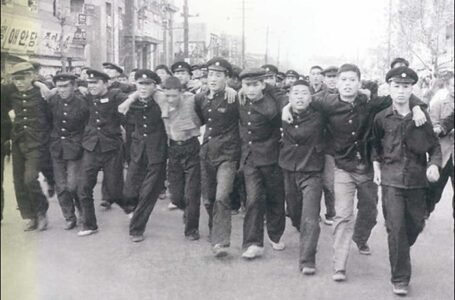The Internet’s Accidental Birth: How the Cold War Built the Digital Age

-Mili Joshi
The Accidental Birth of the Internet: The Cold War and the Digital World. If you opened this article on a mobile device, laptop, or tablet, you have just accessed one of history’s greatest “accidents”-the internet. The internet was never designed for memes, social media, or online shopping; these things were never even on the minds of those who made the internet a reality.
Its origins can be traced to the Cold War period, filled with nuclear tension, espionage, and an arms race that pushed technology into overdrive. And it all began with a simple yet pressing question: How do we keep communication alive, should disaster strike?
Cold War Stressors Today Were Catalysts for Innovations
During the 1950s and 1960s, a period of peak tensions developed between the U.S. and the Soviet Union in political and military terms. With the launch of the first satellite into space on Sputnik in 1957, panic set in the minds. There was fear that the Soviets were a step ahead technologically.
In response, the U.S. decided to set up ARPA (Advanced Research Projects Agency), later rechristened DARPA, to program funds into cutting-edge science and technology with a single goal: to be ahead of the enemy.
Among ARPA’s early works was to try to discover an architecture for a communication network that would survive a nuclear attack. If the conventional phone lines were analysed, they could be found wanting. If the central hub were taken away, the entire communications system would be down. What we need, they thought, was something else entirely; something decentralized.
Enter the ARPANET
Under ARPANET, by about the late sixties, a research proposal to create a packet-switching network that allowed computers to be connected so that they could communicate without the need for a single central control came about. So, should one path be destroyed, data would still be able to move through another.
It was the thing called ARPANET, the very ancestor of the internet.
The first connection of ARPANET was put up in 1969 between UCLA and Stanford. The first communication? A rather anticlimactic “LO.” (They were attempting to type in “LOGIN” when the system crashed after the first two letters. Even the Internet had a rough first day’s experience.)
A year later, many other universities and research laboratories joined. Scientists were able to share data in real time, work in collaboration over distance, and send electronic messages – an early form of email.
From Military Tool to Civilian Playground
Although ARPANET was funded initially by the U.S. Department of Defence, it very quickly began to outgrow military needs. It was obvious to researchers that the use was vastly more general: sharing not only academic papers and code but also personal notes.
By the late 1970s to perhaps early 1980s, a set of rules known as TCP/IP became the standard protocol for sending and receiving data, allowing disparate networks to be linked together. All of a sudden, a network of networks, what we now call the Internet, became a plausible proposition.
Soon, universities, businesses, and, in time, even people came online.
The Cold War Connection
Now it is so easy for everybody to forget: without the fear of the Cold War, there would probably be no internet today, at least not the way we know it.
While the U.S. was concerned with building an instrument for research, it was also concerned with building resilience against attacks from the Soviet Union. The need for a system that could survive disruption and chaos forced engineers to think in different ways. Instead of one control centre, they built a network where every node was equally significant: a design that even today carries the bulk of the internet.
A technology formed with military survival in mind ironically became the biggest network for cat videos, shopping, and global chitchat.
The Internet We Know Today
Transitioning from ARPANET to becoming a public internet took its course gradually. By 1990, the ARPANET was finally disconnected and replaced with new networks. However, its DNA continued.
Then came Tim Berners-Lee’s World Wide Web, invented in 1991, which made the net infinitely more accessible: instead of typing obscure commands, you could click links and move around “websites.”
From there grew an explosive growth: email, search engines, social media, streaming-the internet indeed became an everyday standard for billions.
This is an unplanned legacy.
The internet was not designed to connect the world socially; neither was it intended to democratize information. The Internet was born out of fear-the fear of losing communication from a nuclear strike. That is one of the odd beauties of technological history. Sometimes an innovation made for one purpose ends up changing the world in a way no-one had anticipated.
The Cold War came to an end, but the structure it created not only lived but thrived. Today, whatever we do-whether working, studying, falling in love, or watching a video of someone baking bread at 2 am – we are living in that legacy.
On your next trip through the endless scrolling of feeds or sending off some quick messages, remember: the Internet was not built for you. It wasn’t built for me. It was built for survival.
And, quite ironically, that instrument for survival turned out to be the very backbone of our lives defining how we connect, share, and exist in the 21st century.


